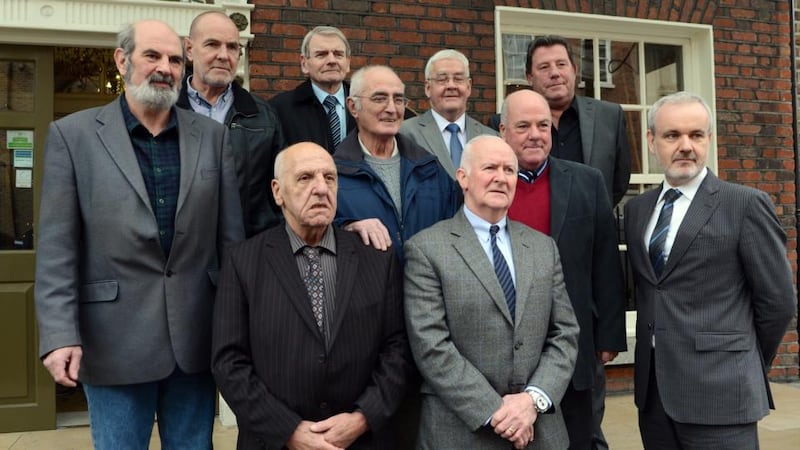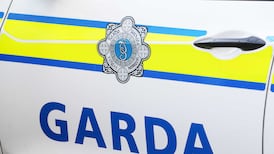In 1971 the British home secretary, Reginald Maudling, appointed Sir Edmund Compton to investigate allegations of “physical brutality” towards the 14 men taken to Shackleton Barracks.
Only one of the men, Paddy Joe McLean, was called to give evidence, and his lawyer was not allowed to cross-examine any of the more than 100 security-force witnesses.
So unperturbed by Compton’s proceedings were the authorities in Northern Ireland that Liam Shannon and Davy Rodgers were arrested and subjected to hooded-men torture while Compton was at work in the North.

In his Report of the Enquiry into Allegations Against the Security Forces of Physical Brutality in Northern Ireland Arising Out of Events on the 9th August, 1971, Compton found that there had been no brutality, although his concession that there had been some "ill treatment" brought a strong rebuke from Ted Heath, the British prime minister, who called the report unbalanced and ill judged. In Ireland it was dismissed as a whitewash.
But as the journalist Ian Cobain points out in his 2014 book, ‘Cruel Britannia’, Compton confirmed that the “Five Techniques” used at Ballykelly were authorised at the highest levels and that “ill treatment of selected prisoners had been an integral part of British military doctrine for years”.
Later that year, announcing a second inquiry under the former lord chief justice Hubert Parker, Maudling went on to confirm in the House of Commons that Britain had used the techniques in other “struggles against armed terrorists” around the world.
Parker's report – formally the Report of the Committee of Privy Counsellors Appointed to Consider Authorised Procedures for the Interrogation of Persons Suspected of Terrorism – published in 1972, found that some of the techniques constituted criminal assaults but that, with ministerial approval and the presence of an army officer and a doctor with psychiatric training, they should continue.
In a strongly worded minority report the Labour peer Gerald Gardiner, a former lord chancellor, described the techniques as illegal under British law and potentially in breach of the full panoply of international human-rights conventions.
Parliament was faced with deciding to ban the techniques or legislate for them, and if the ends of obtaining information justified any means then the legislation would have to include “extreme torture”.
The Parker report revealed that the techniques had been used in Palestine, Malaya, Kenya, Aden, Malaysia and other former British colonies.
“In fact they had been experimenting going back to the second World War, right up to Oman in 1970, so they had well-developed techniques by the time they got to Northern Ireland in 1971,” Cobain says.
“In 1972 Heath responded with a remarkable sleight of hand: he appeared to ban the use of the Five Techniques ‘in all future circumstances’ but actually allowed for their continued use in training.”
In 1971 the Irish government had initiated proceedings against the UK for alleged breaches of the European Convention on Human Rights.
The British, mindful that “the security forces will be on international trial and we must do everything possible to minimise the risk of losing this battle in the propaganda war”, denied that the Five Techniques amounted to torture.
The European Commission on Human Rights found in 1976 that the British were indeed in breach of article 3 of the convention, which prohibits both inhuman and degrading treatment, and torture. It made a finding of torture.
But when the matter came before the European Court of Human Rights in 1978, the court ruled that although the breach of article 3 remained, because of "inhuman and degrading treatment", what had been done did not constitute torture, as a "special stigma" attached to torture as "deliberate inhuman treatment causing very serious and cruel suffering".
It is this finding that the Irish Government is seeking to have reviewed. http://www.patfinucanecentre.org/








